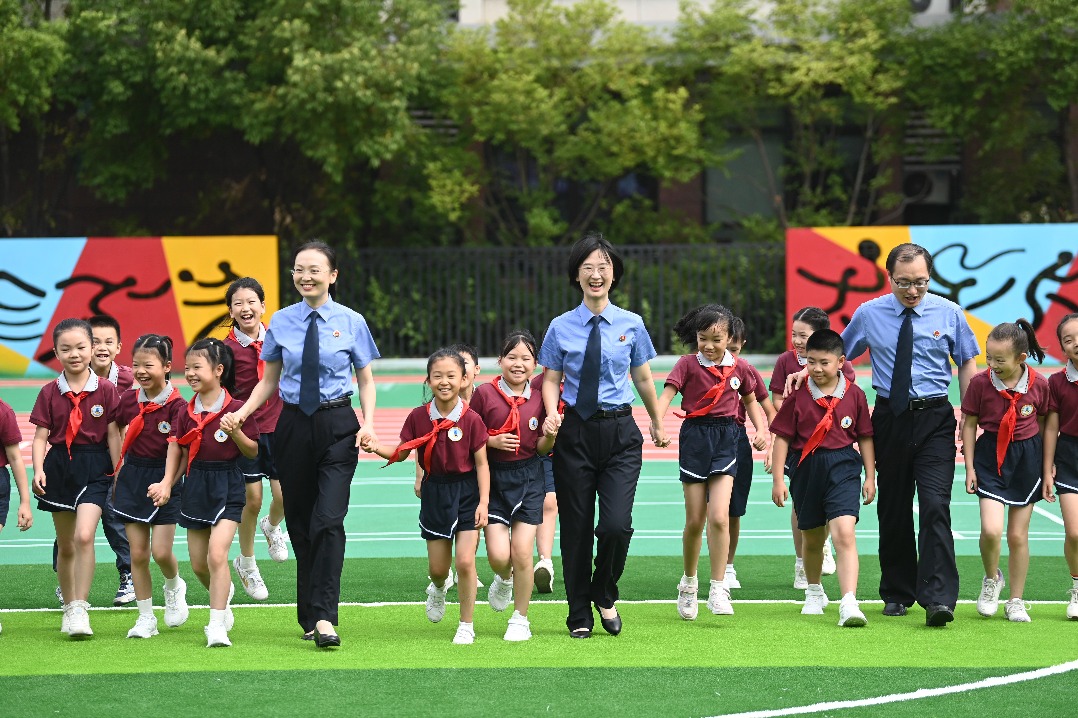Study shows correct stroke order key to improving Chinese writing skills

A new study has confirmed that the ability to follow correct stroke order significantly enhances foreign learners' Chinese writing skills, including recognizing and remembering characters.
Published in the top-tier linguistics journals System and Computer Assisted Language Learning, the research underscores the importance of structured handwriting instruction in Chinese language education. The landmark study was a collaboration between researchers at Tianjin Normal University and the University at Albany-State University of New York.
Immediate and delayed tests showed that participants who followed the correct stroke order performed significantly better in their writing with accuracy and speed, character recognition and long-term memory retention, according to lead researcher Yu Miao, a professor in the department of psychology at Tianjin Normal University.
The research tracked 43 Chinese-as-a-second-language learners from 15 countries with the help of a computer-assisted learning system. Participants were divided into three groups: one practicing correct stroke order, another following random stroke order and a third receiving no stroke order.
Test results showed that participants in the first group recognized and wrote characters 15 percent faster than those in the other two groups. Their memory retention of characters was also significantly longer. The study further indicated that recognition accuracy could increase by 20 percent when writing accuracy improved by 30 percent.
"Stroke order is more than a writing convention. It helps create cognitive scaffolding for the decomposition and reconstruction of Chinese characters," Yu said.
The study provides strong empirical support for stroke order instruction and offers insights into the development of intelligent Chinese learning tools. The research team constructed a dynamic stroke visualization system that breaks down Chinese characters into animated stroke sequences, helping learners visualize and replicate the correct writing process more easily. The system also records learners' behavioral data and tracks improvements in writing accuracy, speed and memory retention.
The research highlights the challenges faced by second language learners in writing Chinese characters, which are logographic and structurally complex. Many students struggle with rote copying methods, which fail to provide meaningful learning connections.
"Rote copying is not effective because learners only retain fragmented images of Chinese characters, which is not helpful for long-term memory," said co-author Sun Hui of Tianjin Normal University. "By contrast, our structured stroke practice helps build a durable mental model for recognizing and using hanzi — Chinese characters."
Foreign students who participated in the study reported noticeable improvements after learning stroke order systematically.
"Before learning stroke order, my writing was inconsistent, and I found characters difficult to remember," said Otieno Innocent Omondi, a graduate student from Kenya. "Stroke order makes my writing easier. It's like a roadmap — it tells me where to start and how to complete each hanzi properly."
For Supakchanad Chookan, a Thai student at Tianjin Normal University, structured handwriting practice made a difference in her learning attitude and strategies.
"Since practicing structured handwriting, I have made fewer mistakes in my homework and feel more confident in writing," she said.
Based on their findings, researchers advocate for integrating stroke order instruction into Chinese-as-a-second-language curricula, incorporating dynamic learning tools with real-time feedback and designing handwriting practices tailored to different proficiency levels.
"Many believe typing alone is sufficient for learners who want to write in Chinese, but our research proves otherwise," Yu said. "Typing activates different cognitive processes compared with handwriting. Proper stroke order builds learners' procedural memory and reinforces long-term retention and comprehension."
To further verify their findings, Yu and his team plan to use functional magnetic resonance imaging — a method of visualizing brain activity by detecting changes in blood flow — to explore how stroke order training activates language processing areas in the brain.
Guo Yanqi contributed to this story.
yangcheng@chinadaily.com.cn
- Third Cyberspace Security Forum convenes in Tianjin
- China launches satellites from sea
- Hunan dragon and lion dance competition celebrates cultural vitality
- Guangdong launches nationwide recruitment drive to attract more top-tier talent
- Former UN official praises China's growth journey
- Chinese association's guidelines for cancer treatment promoted globally in 16 languages





































